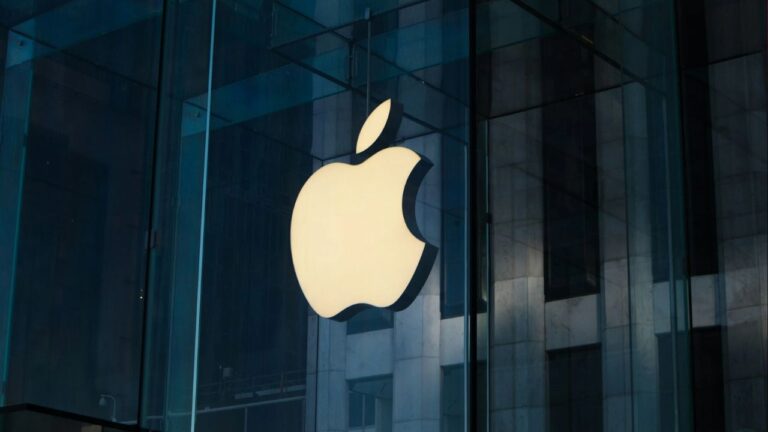How Apple’s Margin Squeeze Impacts Profits and Stock Value in 2025


As Apple navigates a complex economic landscape in 2025, marked by escalating tariffs and a shifting AI-driven market, its strategy of absorbing rising production costs—commonly known as “eating their margin”—has sparked debate about its impact on profitability and stock value. With Apple’s stock already down 31% year-to-date in 2025 due to tariff concerns, this article explores how squeezing margins affects profits, the ripple effects on stock performance, and what it means for investors, drawing on recent data and expert analyses.
Understanding Margin Compression and Its Effect on Profits
Apple’s gross margin, the profit left after subtracting the cost of goods sold from revenue, is a key indicator of its financial health. In the first quarter of fiscal 2025 (ended December 28, 2024), Apple reported a record-high gross margin of 46.9%, up from 46.6% in the prior quarter, driven by a growing services business with 75% margins compared to 39% for hardware.
However, the company faces significant pressure from tariffs imposed by the Trump administration, which increased to 125% on Chinese goods in April 2025. These tariffs directly threaten Apple’s margins, as 88% of its fiscal 2024 revenue came from products, most of which are manufactured in China, Vietnam, and India.
Tariff-Induced Margin Squeeze
If Apple absorbs these tariffs without raising prices, its gross margins could be “decimated,” according to Morningstar equity strategist Brian Colello. For example, tariffs could add hundreds of dollars to the cost of producing a single iPhone, significantly increasing the cost of goods sold. A worst-case scenario estimates that Apple’s U.S. margins could shrink by 10%, with earnings per share (EPS) potentially dropping by 25–30%. This is because 20–25% of Apple’s total revenue, primarily from hardware sales in the U.S., is exposed to tariff-related cost increases, while fixed operating costs remain unchanged, amplifying the impact on net profits.
Apple’s net profit margin, which measures income as a percentage of revenue, was 24.3% as of December 31, 2024. A 10% reduction in gross margins could compress this figure significantly, reducing the $36.3 billion net income reported in Q1 2025. For instance, a 30% EPS decline, as projected by Forbes, could translate to a $10–12 billion drop in quarterly profits if revenue remains flat at $124.3 billion. This profit erosion directly undermines Apple’s ability to sustain its $30 billion shareholder returns, including dividends and buybacks, which are critical to supporting stock value.
Services as a Buffer
Apple’s services division, including the App Store, Apple Music, and iCloud, offers some relief. Growing 14% in Q1 2025 and contributing 39% of gross margin dollars despite only 12% of revenue, services have a 75% margin that cushions hardware-related losses. However, services alone cannot fully offset a sustained margin squeeze, as hardware (led by the iPhone, which accounts for 49% of revenue) remains the company’s primary profit driver.
Impact on Stock Value
Apple’s stock has been battered by tariff fears, losing 20% of its value in just three trading days in April 2025, wiping out $638 billion in market capitalization. By April 2025, its market cap stood at $2.959 trillion, down from a peak of nearly $4 trillion in December 2024. The 31% year-to-date decline reflects investor concerns about profit erosion and uncertainty over Apple’s response to tariffs.
Why Margins Matter to Investors
Stock valuations are heavily influenced by earnings expectations. Apple’s price-to-earnings (P/E) ratio, a measure of how much investors pay per dollar of earnings, is high at around 33 based on projected 2025 earnings of $7.40 per share. A 25–30% EPS drop could push the P/E ratio even higher, making the stock appear overvalued unless Apple offsets losses through price hikes or cost-cutting. Investors are also wary of reduced shareholder returns, as lower profits could force Apple to scale back its $29–$30 billion quarterly payouts.
Market Sentiment and Volatility
Posts on X highlight the severity of the margin squeeze, with one user stating, “Apple’s margins have been just cut by 1/2,” reflecting bearish sentiment. Another post noted that without tariff exemptions, Apple must either raise prices or accept lower profits, both of which could hurt stock returns. While a temporary tariff suspension in April 2025 led to a 15% stock rebound, the stock remains 20% below its $250 peak, signaling ongoing investor caution.
Apple’s Mitigation Strategies
Apple is not standing still. Several strategies could soften the margin squeeze and stabilize profits and stock value:
- Price Increases: Apple hasn’t raised base iPhone prices in seven years, despite a 29% rise in the U.S. consumer price index. Analysts suggest a $100–$200 price hike for the iPhone 17, launching in fall 2025, could offset tariff costs. However, UBS estimates a 30% price increase (e.g., $350 for a $1,199 iPhone) could reduce demand, lowering revenue and profits.
- Supply Chain Shifts: Apple is ramping up iPhone production in India, where tariffs are 26% compared to China’s 54%. Plans to increase India’s share of global iPhone production to 25% by 2025 and 50% by 2027 could reduce costs, preserving margins.
- Carrier Partnerships: Apple could share tariff costs with U.S. carriers, who subsidize iPhones to retain customers. This could limit price hikes and maintain sales volumes.
- Services Growth: Continued expansion of services, projected to grow in the “low double digits” in Q2 2025, will bolster margins. Features like generative AI in the iPhone 16, launched in September 2024, are expected to drive service subscriptions, offsetting hardware profit declines.
2025 Outlook and Investor Implications
Apple’s Q2 2025 guidance projects revenue growth of “low to mid-single digits” ($91.7–$95.3 billion), with gross margins between 46.5% and 47.5%. While this suggests resilience, the tariff threat looms large. Analysts are mixed: Visible Alpha reports 10 “buy,” 4 “hold,” and 2 “sell” ratings, with a consensus price target of $246, implying 3% upside from April 2025 levels. However, a sustained margin squeeze could push the stock lower if earnings disappoint.
Conclusion
Apple’s strategy of eating its margin to absorb tariff costs directly reduces profits, with a potential 25–30% EPS drop threatening its $36.3 billion quarterly net income. This has already driven a 31% stock decline in 2025, erasing $638 billion in market cap. While services growth, price adjustments, and supply chain shifts offer mitigation, the uncertainty of sustained tariffs keeps investors on edge. For your USA news website, covering Apple’s financial challenges with data-driven insights can attract high-value traffic, supporting your $500–$1,000 monthly AdSense goal. Stay tuned for updates as Apple’s Q2 2025 earnings reveal the true impact of these pressures.






